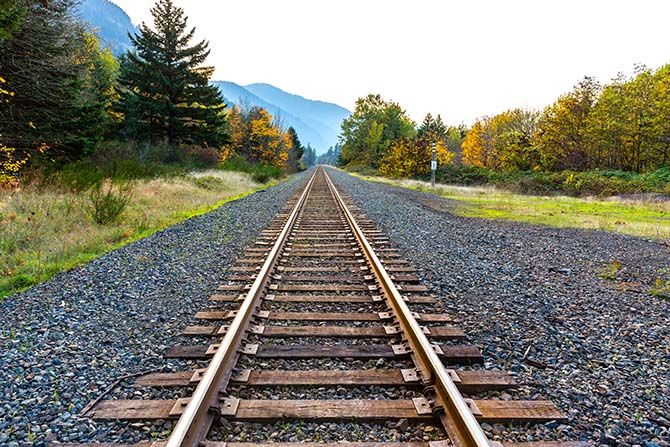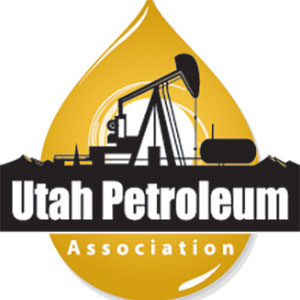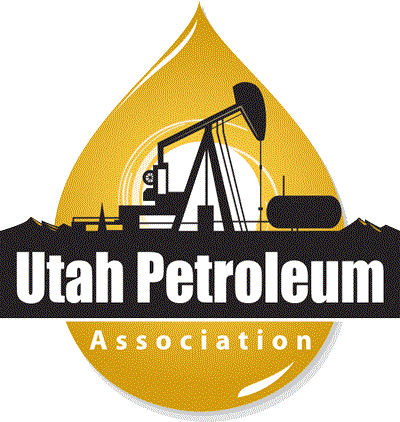We’ve all seen it. For as long as there has been work in the Uinta Basin, everyone from outsiders to Salt Lakers to the basin’s own residents give a little head tilt, a smirk, or even say outright, “The basin has always been boom and bust,” when talking about the massive growth underfoot today. I understand the skepticism, but the current “boom” isn’t just a boom, it’s a game-changing shift.
Picture a rail junction. For years, we had a single track (metaphorically, of course — there was no actual track!) to operate on — Highway 40 from the basin to the Salt Lake refineries. Today, it’s more like a switching yard, a junction in the track. We still have the Salt Lake refineries, the preferred home for basin barrels due to their relative proximity, but now we have additional options, necessary thanks to this sustained growth. The options are literally thanks to rail (the real steel kind this time, not just the metaphor).
We can now take basin barrels to Salt Lake City (SLC), or we can truck them south down HW 191 to Helper or Price, put them on actual rail, and rail them to the Gulf Coast or any other destination that pays a premium to West Texas Intermediate Crude, of which there are others. Basin production is no longer hamstrung by what the Salt Lake market can accommodate. The optionality, that junction in the switching yard, gives us confidence this is not just another “boom.” The world will continue to need oil, and particularly our preferred waxy crude, for many, many years to come. We now have a way to get our basin barrels out to the wider world.
Speaking of rail, we are often asked what our position is on the Uinta Basin Railway project. In short, UPA and its Executive Committee, the largest producers in the basin, are not driving this project nor are we involved in the new financing effort for this private venture to tap into public bonding. While UPA supports infrastructure projects that seek to promote Utah’s natural resource and energy sectors, the major producers cannot commit to rail yellow and black wax on the Uinta Basin Railway unless the project is able to compete financially with existing transportation alternatives already being utilized by the industry and must not result in increased gasoline prices for Utah consumers. To read more on our position, go to https://utahpetroleum.org/wp-content/uploads/2023/03/Utah-Petroleum-Association-Statement-on-Uinta-Basin-Railway-3.30.23.pdf.
But even without the Uinta Basin railway project, we are actively railing production out of the state today. Many of you have heard about the basin’s growth trajectory before, but here are the raw numbers:
- Traditionally, the basin has produced 85k bbl/d, all trucked west to SLC via HW 40.
- Today, the basin is producing 145k bbl/d. 85k bbl/d continue to be trucked via HW 40 to SLC, with roughly an additional 60k bbl/d exported to the United States Gulf Coast, with nearly all of that being trucked via HW 191.
- We have a significant continuing growth trajectory ahead. In addition to the 85k bbl/d going to SLC, we are on schedule to send nearly 70k bbl/d down HW 191 by 2024, growing to ~80k bbl/d down HW 191 by 2025.
- This can all be serviced by the existing rail facilities in Helper and Price and is independent of the Uinta Basin Railway project status.
- Over a five-year period starting this year, we expect just the product moving via HW 191 to generate $387M to the state of UT — that doesn’t include the product and dollars that are going to SLC or all the other taxes, jobs, and broader economic benefits this kind of growth provides.
- Over the next five years, we expect to generate nearly a billion dollars in severance tax to the state of Utah — $917M from the combined barrels feeding the Salt Lake refining market and those exported out
of state. - In summary, we are already delivering. Just this fiscal year (2022-2023 FY), the eight-month oil and gas severance tax revenue as reported from the tax commission is already $89M. That’s nearly triple the previous five years of annual revenue.
This is a rapidly escalating growth pattern, not a boom, but a shift, a junction. In the next installment, we’ll highlight the economic impacts of this growth to the state, both what we have already seen and what we anticipate for the next few years. The industry is not cracking the champagne yet as work continues, and the work ahead is daunting. We’ve got road improvements, increased storage, rail capacity growth, gas offtake infrastructure and electrification, to name several. None of these alone are quick and easy, but together, they are a mountain.
But we’ve climbed mountains before — planning, collaboration and hard work will get us to the summit.









